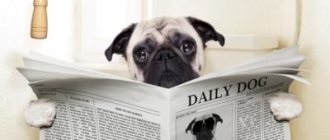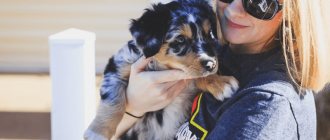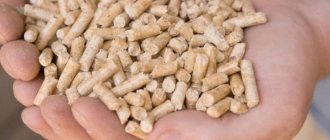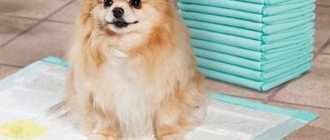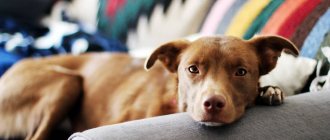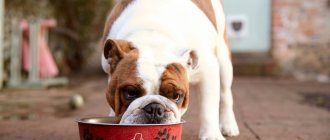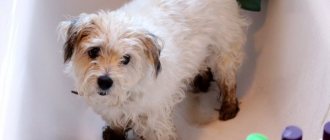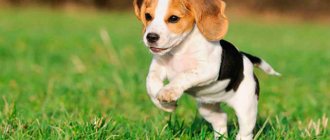The Miniature Pinscher is a small dog with big ambitions that requires special care, training and proper upbringing.
Historically, miniature pinschers were bred to catch rats and guard important documents.
They are ideal travel companions and loyal friends.
Officially, the breed and, accordingly, the miniature pinscher kennel was recognized in 1895 by the German Club of Pinscher and Schnauzer Fans.
How much the dog is trained to follow commands, toilet trained, and the age of the puppy often determines how much a miniature pinscher costs.
In order to understand what is special about this breed and how to care for a miniature pinscher correctly, let’s look at the intricacies of raising puppies in more detail.
How to choose a name
Choosing a name is a crucial moment that needs to be taken seriously.
If miniature pinscher puppies are purchased from breeders, then most likely the dog has already been named.
However, in this case, you can choose an abbreviation or a completely different name that the puppy will get used to.
Dog trainers recommend choosing a name for your puppy as quickly as possible in order to teach the dog to respond to it.
Recommendations for choosing a nickname:
- You can name a dog by its color, habits, and distinctive characteristics.
- The whole family should like the nickname.
- Name the puppy according to its passport details.
- The nickname should be short, sonorous, loud, original.
How to choose a tray and litter for toilet training a pinscher
Tray
The choice of tray completely determines how quickly the pinscher will learn to defecate in its toilet. The accessory parameters must correspond to the size of the four-legged friend. The material from which the toilet item is made should not have a strong plastic smell. It can forever discourage a dog from going to a specially prepared place to relieve itself.
Filler
When teaching a pinscher to empty its tray, you can use sand, wood shavings, and granules as filler. You can lay down newspapers or absorbent diapers.
How to care for the litter box
There is no need to thoroughly wash the toilet item after each bowel movement. It should have the smell of a four-legged friend, because dogs find their favorite place for “wet business” precisely by smell. Once a day you can rinse the tray using laundry soap. If your pet does not like the aroma of the detergent, then it is better to care for the device without it.
Proper nutrition
Miniature Pinscher puppies require a specific diet.
A lack of any vitamin or beneficial element can lead to the development of diseases.
Today there are 3 food options: “natural”, dry food, canned food.
Please note that a mixed diet for a miniature pinscher is not recommended. Therefore, he needs to be accustomed to one of the foods immediately.
Natural food is the cheapest food for a puppy, which involves the introduction of additional vitamins into the diet.
Veterinarians claim that it is impossible to ensure the proper content of vitamins and beneficial elements with “natural” food, so you need to use supplements.
Dry food is perfectly balanced. Using food from leading pet product manufacturers, keeping and caring for the dog is kept to a minimum.
Dry food is convenient to use on the go, determine portions, and store. The only drawback is the price.
Canned food is the most delicious food that a dog eats with pleasure. However, despite the taste and richness of useful components, the cost of such a delicacy is quite high.
Therefore, keeping a puppy exclusively on canned food is not rational for most owners.
Buying a dog, how to choose a miniature pinscher puppy
It is best to purchase a miniature pinscher puppy at the age of 2-3 months. Younger puppies are not yet strong enough and need their mother’s milk, with which they receive substances important for the formation of immunity. Puppies older than 4-5 months are already beginning to become attached to the person in whose house they were born, and it will be a little more difficult for them to get used to their new owner.
In general, a miniature pinscher can get used to a new owner at any age, but since dogs of this breed are distinguished by great devotion to their owner, it is much more difficult for them to get used to another person as adults than as a puppy.
The price for miniature pinscher puppies ranges from 10-50 thousand rubles, depending on:
- Presence/absence of pedigree;
- Titles of parents. Puppies from champion animals are more expensive;
- Gender of the animal. Miniature Pinscher females, as is the case with all popular decorative dogs, are more expensive than males.
- Vaccinations done. Sometimes breeders increase the price for already vaccinated animals, since the costs of vaccination are significant.
Mixed-breed puppies, mixed breed puppies (breeding marriage) and animals without documents are usually sold for a low price. If the purity of the dog’s breed line is of great importance to the future owner, before purchasing you must:
- Look at the puppy (you cannot purchase an animal based only on its photo);
- Look at the puppy's mother. Please note: the bitch must be nursing, that is, the puppies must belong to her;
- Look at the documents of the owner and the dog (pedigree, veterinary passport);
Healthy miniature pinscher puppies are active, love to eat and are naturally inquisitive, and as puppies they are also particularly self-confident, so they approach strangers without much fear.
If the puppy is lethargic, refuses food, and does not show much interest in playing, then you should not buy it. But scratches on the body should not be alarming, since pinscher puppies often carelessly leave them for each other during games.
Those wishing to purchase a dog for further participation in exhibitions should refrain from purchasing a puppy with external defects, such as:
- white spots in color;
- non-compliance with acceptable color;
- curvature of paws, tail and spine;
- too large for his age;
- malocclusion and, in general, dental problems, which are not uncommon in small breeds of dogs.
And of course, you should be wary of obvious signs of ill health in the puppies and their mother - discharge from the eyes and nose, unkempt dirty fur, bald patches on the body, an unpleasant odor.
Toilet training
In order to avoid problems with piles and meadows in the future, the dog must be toilet trained immediately.
From the first days, it is recommended to determine the filler, a stationary place for the tray, plates, and toys.
A small puppy, during the period of adaptation and growing up, cannot yet withstand a long time without walking.
Therefore, in order to take care of the cleanliness of the premises, Miniature Pinscher puppies are immediately toilet trained.
Typically, miniature pinscher puppies are vaccinated at the age of 6-8 weeks, and after 2-3 weeks they undergo revaccination.
Then another 3 weeks of quarantine. You can go outside only after the end of quarantine.
Due to the fact that small puppies cannot be walked outside during the adaptation period, they need to be trained to use a tray.
In most cases, it is not possible to toilet train a small puppy right away. Therefore, dog experts recommend starting with paper.
It perfectly absorbs moisture, does not stain your paws, is pleasant to the touch, and folded in several layers perfectly protects the floors from dirt.
If the dog comes from a professional kennel, then most likely he is already litter box trained.
And if you still didn’t have time, then the owner will have to go through this difficult path together with the pet.
Training tricks:
- In order for the puppy to get used to the litter box and not make “surprises”, dog handlers recommend systematizing meals and walking time;
- You can give water in the required quantity only in the morning and afternoon. 3 hours before the owner goes to bed, the water tray must be removed and the puppy placed on the toilet;
- If the puppy cannot be accustomed to paper quickly, then you need to be patient. And with every impulse to “become mischievous” you need to scold, and after the correct execution of the actions, you need to encourage. This way the dog will quickly understand what is being sought from him.
Physiological needs of dogs
An adult dog urinates 2-3 times a day and defecates 1-2 times. It depends on nutrition, age, conditions in which the dog is kept, habits, and health status. In hot weather, pets urinate much more often due to the large amount of fluid consumed; during the period of sexual heat, the need to relieve themselves also increases.
When drawing up a dog walking schedule, the owner must study the animal’s temperament and behavior. An important point to take into account is that the maximum time between walks is no more than 11-12 hours.
Instructions on how to toilet train a Pinscher
It must be remembered that you rarely achieve the desired result the first time. Therefore, owners must be patient and remember an important rule - we are responsible for those we have tamed. In order to preserve your weak nerves and not turn out to be a villain in the dog’s eyes, it is suggested that you follow the instructions to teach your pinscher to relieve himself in a specially designated place.
- As soon as the dog crosses the threshold of the house, it must know where its toilet is located.
- For the first time, it is recommended to remove carpets so that the Pinscher does not choose them to relieve himself.
- Pinschers, like all dogs, choose their own place to defecate. If the owners approved it, then you must immediately put the tray there. It is recommended to use several trays in the house. Their number depends on the area where the dog lives.
- At first, you need to carefully monitor the animal’s behavior. The pinscher sniffs corners and fusses - a sign that he is choosing a place to carry out his “wet” business. The owner must take the dog to the litter box. After relieving itself in a specially designated place, the pet should be rewarded with a bone, tasty food, and a kind word.
Care and education
Miniature Pinscher puppies, like adults, require careful care of their coat, teeth, and body as a whole.
In order for the dog to always be in shape, you need to take active walks every day, provide adequate nutrition (with all vitamins, macro-, microelements), train, and groom the dog.
Otherwise, if proper care is not provided, the dog may receive:
- obesity;
- formation of stones in the bladder;
- baldness;
- fragility of the musculoskeletal system, teeth.
Since childhood, the miniature pinscher adheres to the hierarchy in the “house”. If a dog from an early age is not accustomed to obeying its owners, then in the future it will be difficult to do so.
Cynologists of the Slavyanka kennel recommend starting the care and education of a puppy from the first day of arrival in a new home.
Under no circumstances should the puppy be allowed to play pranks or disturb the rules, otherwise the grown dog will constantly show disobedience.
Owners should know how to properly organize the care of a miniature pinscher and study its habits.
During training, according to the dog handlers of the Slavyanka kennel, you should not raise your voice, offend or beat the puppy. Otherwise, you can raise a frightened, angry, aggressive dog.
In order for the dog to obey and follow commands, owners must provide proper care:
- regular hygiene procedures;
- protective clothing (shoes), adequate nutrition;
- active walks.
As they say, miniature pinschers are easy to overfeed.
To avoid obesity, you need to organize regular physical activity.
Also, specialists from the Slavyanka kennel claim that if the pinscher does not have enough active walks, he may begin to spoil things in the house. Therefore, it is very important to organize your dog’s leisure time as actively as possible.
How to train a Pekingese puppy to toilet outside
It will be easier for Pekingese owners if they teach the dog to use the toilet outside. This method will be facilitated by the dog itself. The fact is that the Pekingese breed is very clean; in most cases, such dogs do not shit in the place where they sleep and live. It’s not for nothing that they are called imperial dogs!
Important! If you just bought a puppy, ask the breeder for all the information about vaccinations. After such injections, the pet must undergo a quarantine period. During this time, walking your dog is strictly prohibited. You are only allowed to go to the toilet using a litter tray. In the first days, the dog will pee anywhere, just not in the tray, you’ll have to deal with it.
When the quarantine period is over, breathe a sigh of relief. Now your main task is how to train your Pekingese puppy to use the toilet outside. To do this, after eating, we immediately take the baby outside (preferably on the grass or under a tree) and wait. When that “long-awaited moment” has arrived and the puppy has recovered, treat him with a treat and praise him. After that, it's better to take it home. This way he will remember the last moment, namely when he peed on the street and was given a treat for it. The next time he goes for a walk, he must first recover, and then walk with a pure soul.
It also happens the other way around: a dog is walking outside, playing for more than an hour, but not peeing. And then, when he comes home, he does his dirty work on your carpet. This happens not only with a puppy, but also with a teenage dog. The reason may be that the time for the toilet was not chosen correctly from the first days of your cohabitation. For example, the baby recovered and you screamed and took him out into the street, hoping that he would understand his mistake. But he has nothing to pee with! This way, the dog will understand that by making a puddle in the house, you are encouraging him to go outside.
How to teach a Pekingese to go to the toilet by giving him punishment? Most likely you won’t succeed and it’s better to forget about the punishment. The only thing you can do is strictly order “No!” or “Ugh!” It’s worth trying to show that you are offended and, for 10 minutes after his mistake, not notice his attention.
If you don't want your puppy to leave puddles all over the house, then at first try to monitor his behavior. If you are as attentive to him as possible, you will be able to catch the moment when he wants to go to the toilet, and all you have to do is take him outside or to the diaper.
Signs indicating urgent walking:
- The dog, which previously played enthusiastically, stops doing so and walks in circles, unable to find a place for itself;
- Sniffs too intensely and starts whining;
The pet tucks its tail under itself and means that it is holding back;
HOW TO TRAIN YOUR PEKINGNESE TO THE TRAY?
A tray and a diaper are not the best option for the toilet. A small puppy can still get used to this, but if you are trying to accustom an adult pet who has been going outside all his life to relieve himself, it will be difficult. These are not Chihuahuas and Yorkshire Terriers, which easily get used to the toilet in the apartment. If you are not going to go outside with your pet often, I recommend getting a small puppy and training him for this.
There are 2 options for how to train a Pekingese to use a litter box at home, now we will look at them.
1. For a certain time, you must limit the space for your pet. Try moving him to a small room or a large enclosure. For this you will also need a decent amount of old newspapers or diapers. If this is an enclosure, cover it completely except for the place where the Pekingese will eat (dogs do not shit in the place where they eat). Carry out the same manipulation with a small room.
Now the owner’s task is to remove one uncontaminated diaper or newspaper each time after some time. At the end of the experiment, your little friend should only pee in one corner. Don't forget to praise him after choosing the right place. All you have to do is put the “smell diaper” in the tray and the training is over.
2. For the second option, you need to put a newspaper or diaper in the corner of each room. Thus, make several toilets for your pet. Every time after eating, take it to any place with a newspaper. If he recovers, praise him! For such a course of study, one week is generally sufficient. It is considered a success when the Pekingese has eaten and goes to relieve itself in one of the corners.
Your next steps: “how to train a Pekingese puppy to use the toilet in one corner?” In order for your pet to start going to one place, you need to gradually reduce the number of toilets without taking into account the main one, which he goes to the most. After each toilet is cleaned, you need to thoroughly wash the floor. When there is only one place left, you can put a special tray instead of the newspaper, but the newspaper must be put back in the tray (then removed over time).
Important! If, when training a Pekingese to use the tray, he will also go outside at the same time, 90% of the time you won’t succeed with the tray.
Recommendations:
- Before morning and evening walks, feed and water your pet;
- Don't change your walking location too often;
- Try teaching him a special command, for example: “Go to the toilet”;
- On your pet’s first walks, carry a treat with you and reward him when he goes to the toilet;
- It is better to change a place that the dog does not like for a walk;
- Remember where your baby urinates; it will be easier for you if you are in a hurry and don’t have time for long walks.
Video
Photo gallery
Perhaps, after viewing a selection of photos of these miniature creatures with a strong character, you will decide to get yourself a similar pet.
Maintenance and care
Due to its small size, the miniature pinscher can successfully live its entire life in an apartment without going outside. And yet, given the high mobility and curiosity of dogs of this breed, it is useful to regularly walk them in places that are safe for them (away from roads and too crowded places).
In autumn and spring, the dog should wear a windbreaker or raincoat, and in winter - warm overalls, boots with non-slip soles and a hat. During the off-season, the dog can be walked without shoes, but in this case it is better to have a special dog shampoo for paws at home. In winter, shoes will not only save your pinscher’s paws from the cold, but will also protect them from the skin-corroding reagent that is sprinkled on roads.
Regardless of whether the dog will go outside or not, it must be accustomed to a leash, collar and harness. Situations in life are different: a pet unaccustomed to these accessories can throw a real hysteria if suddenly you need to transport it somewhere, taking it on a leash. At home, a pinscher can walk around in a comfortable soft collar, but it is better to walk it on a harness, since it is safer for the neck and spine of such a fragile dog.
Here's what you need to have in your home to keep a miniature pinscher:
- dog toilet;
- hygienic absorbent diapers;
- carrying;
- dog first aid kit;
- toys;
- a sun lounger and/or a closed house with soft bedding inside;
- bowls for food and water;
Regardless of whether the dog is being walked or not, it is better to purchase a toilet for it, because, for example, on a cold rainy day it is simply dangerous to take it outside. Miniature pinschers are equally well accustomed to the toilet at home and to relieve themselves outside the walls of the house, which distinguishes them from many other representatives of decorative dog breeds.
For purely domestic keeping, a miniature pinscher needs a full-fledged dog toilet, and a male dog definitely needs a toilet with a pole. Absorbent diapers as a latrine are only suitable for very small puppies.
But even when keeping an adult dog, diapers should always be in the house, as they may be needed for sudden transportation of the dog to the veterinary clinic, or simply for a trip with it to the country. For the same reason, the dog should have a comfortable carrier, or better yet two – a small bag for short trips and a convenient plastic container for long trips.
Miniature pinschers tolerate the road well; sedatives and anti-sickness medications, as a rule, are not required, but it is better to have them on hand. The dog's first aid kit should contain anti-poisoning agents, because dogs of this breed often try to pick up something dangerous on the street, and they also often have cuts and minor injuries such as scratches, so antiseptic agents should be on hand.
Since the Pinscher is a very playful and mischievous creature, it is necessary to periodically pamper him with new toys. A small puppy should have silicone or rubber toys to chew on and massage his gums to help his teeth form properly. During the period of teeth formation, tugging games with your pet should be excluded so as not to inadvertently deform its bite.
The Pinscher should have a private place to rest, where the dog should not be disturbed unless absolutely necessary. For your pet to sleep, an open soft bed or a house with a lounger is suitable, but it is better to buy both for him.
Despite the fact that the dog is small, it is better to purchase bowls for it on a height-adjustable stand. After all, if a growing pinscher has to constantly bend over to low bowls, his posture will deteriorate. This is harmful to the dog's health and serves as a reason for reducing the evaluation score at the show.
